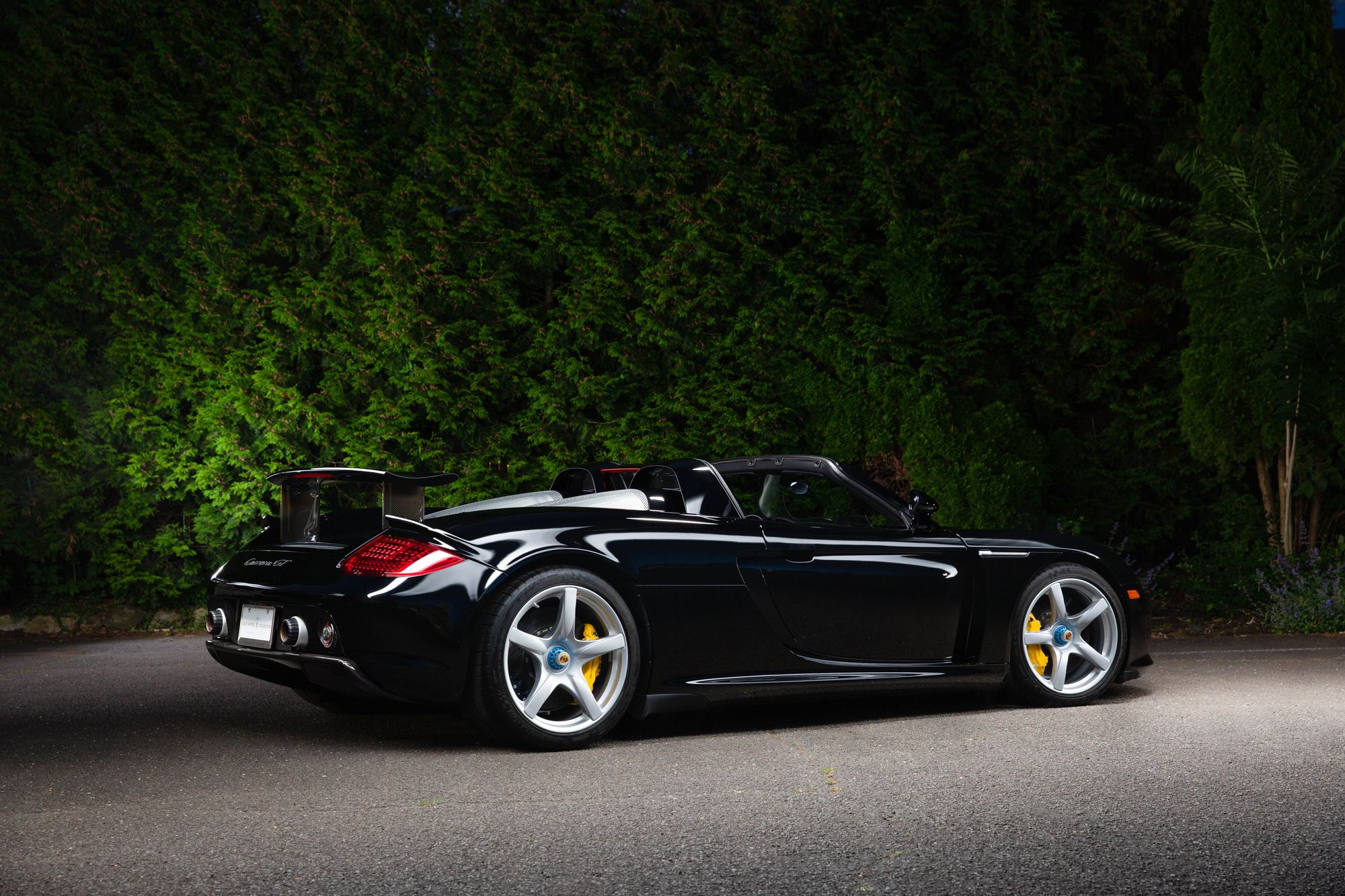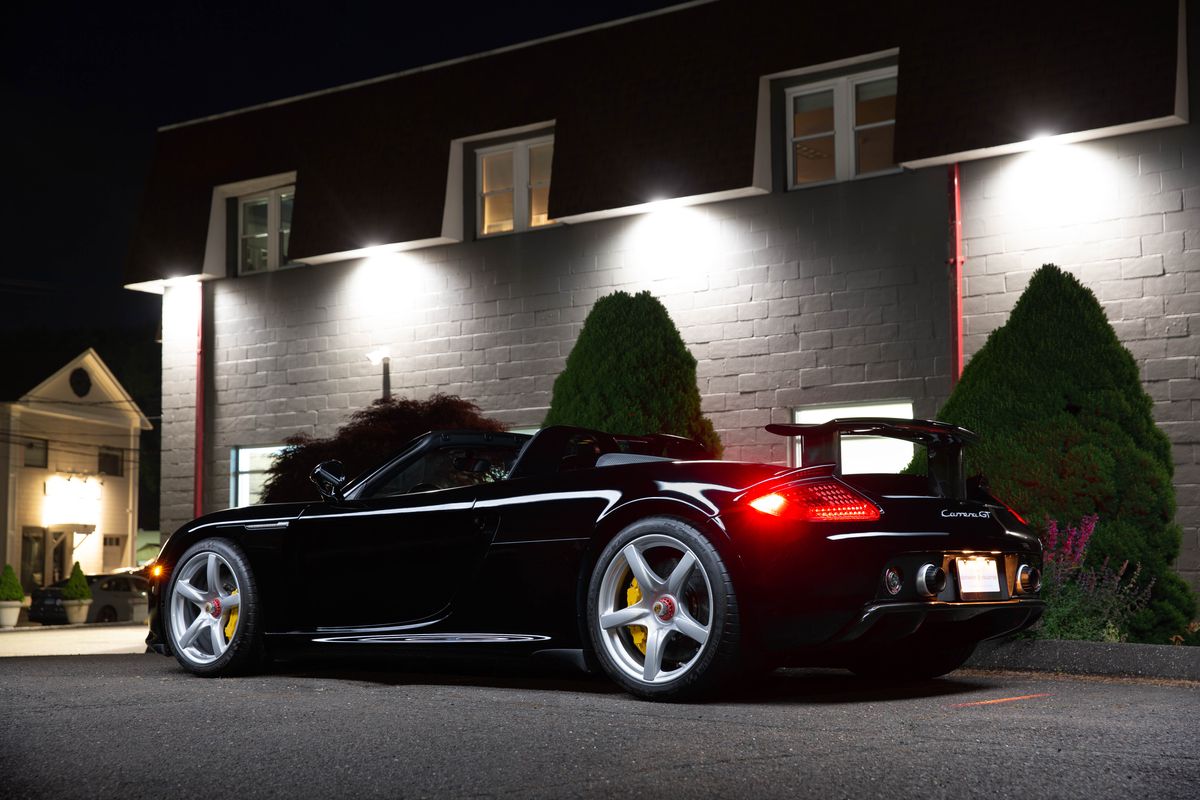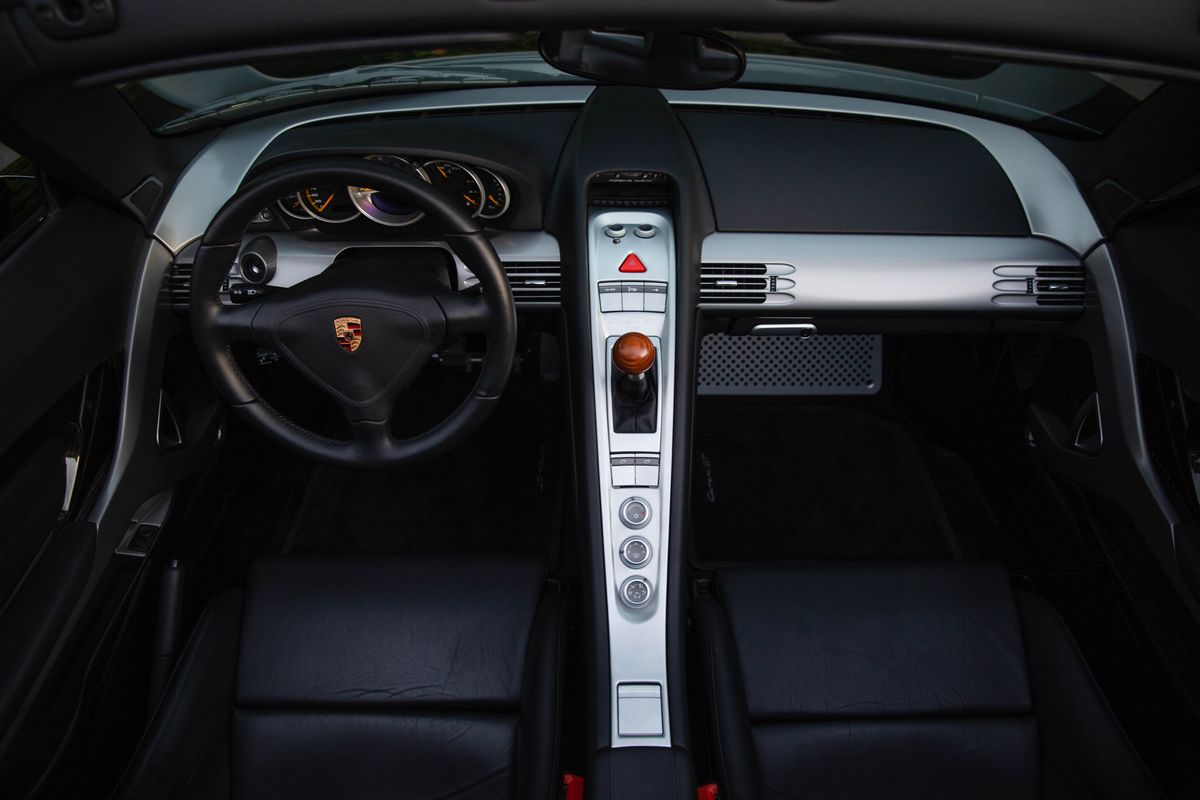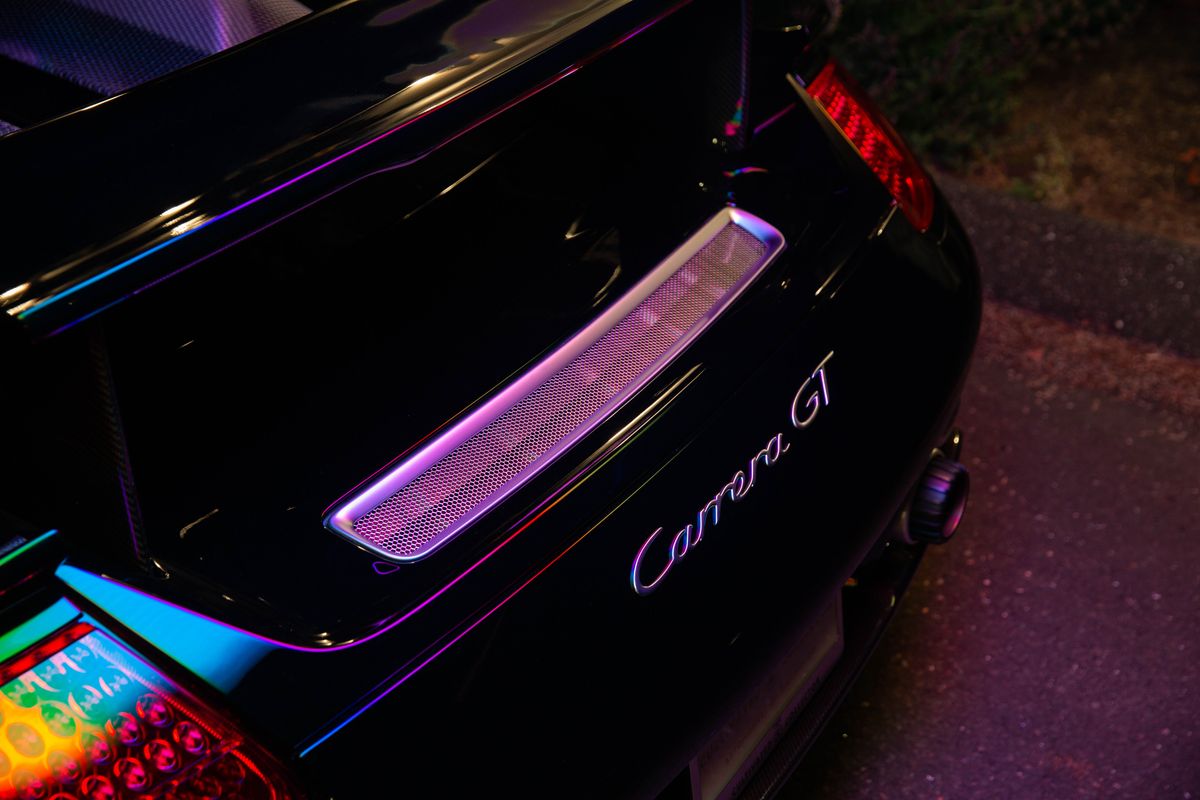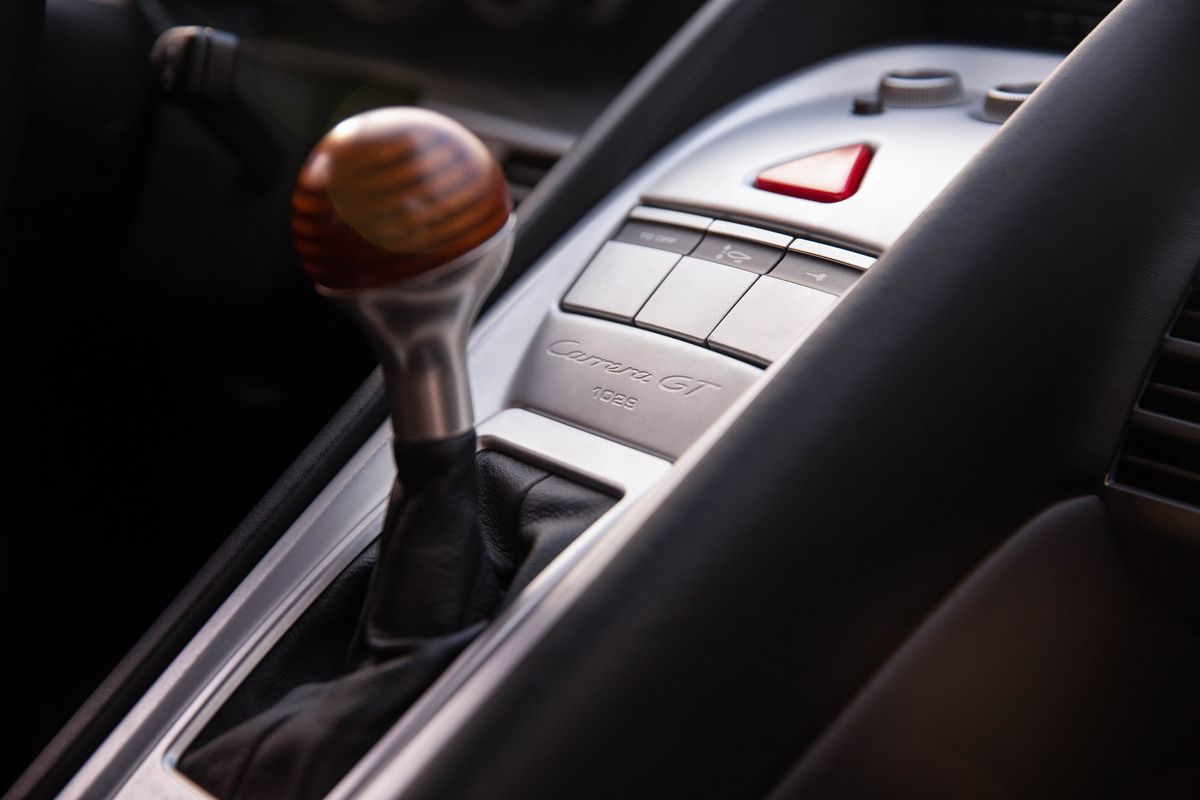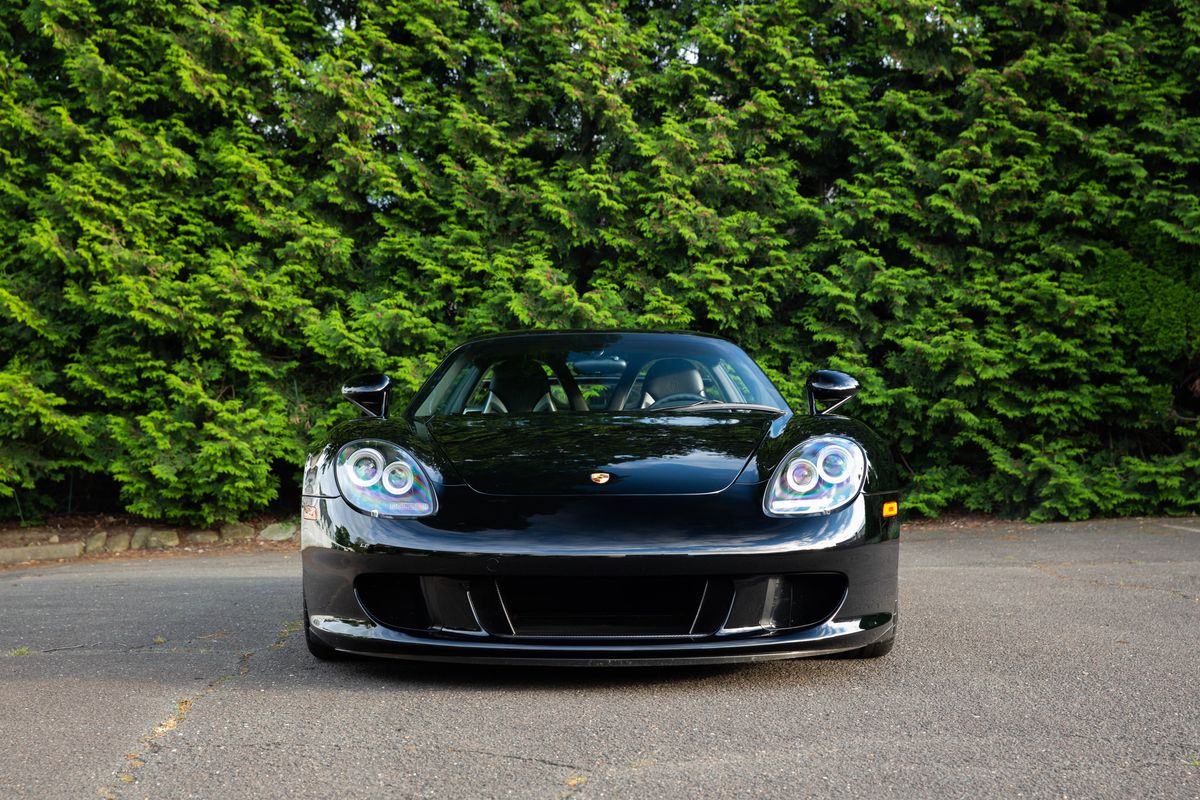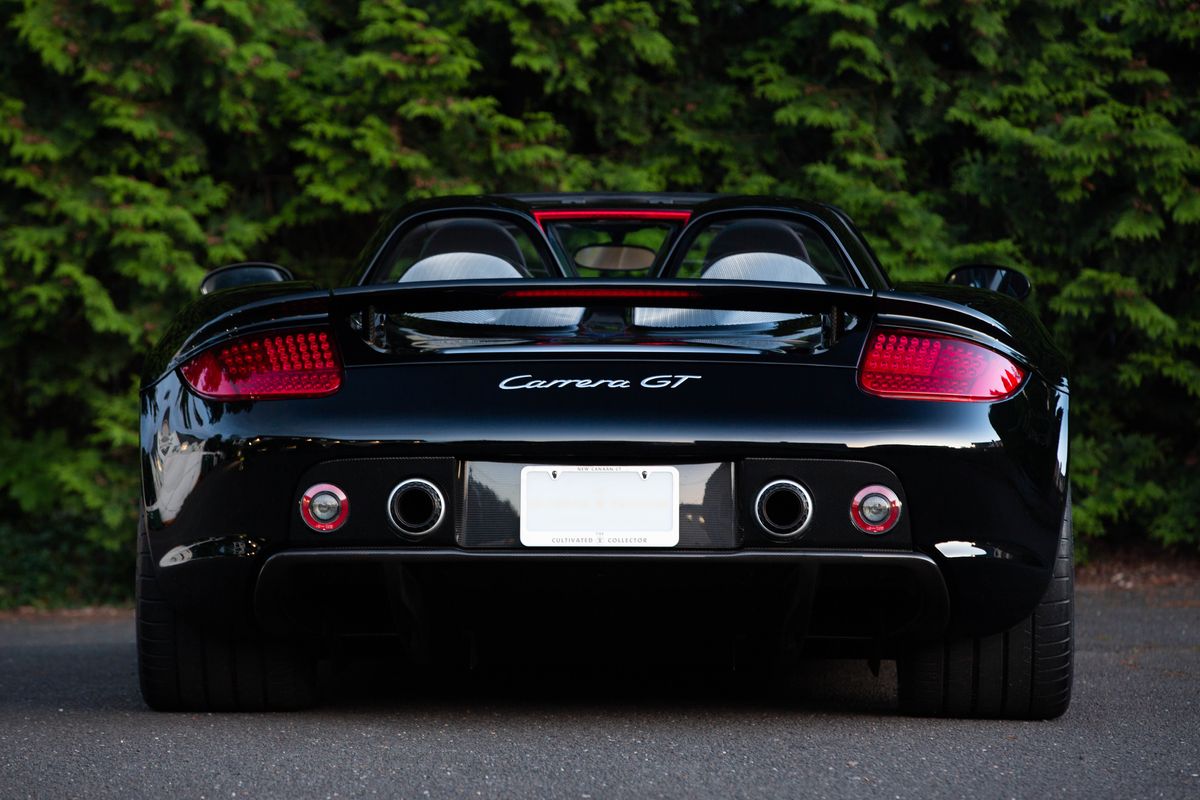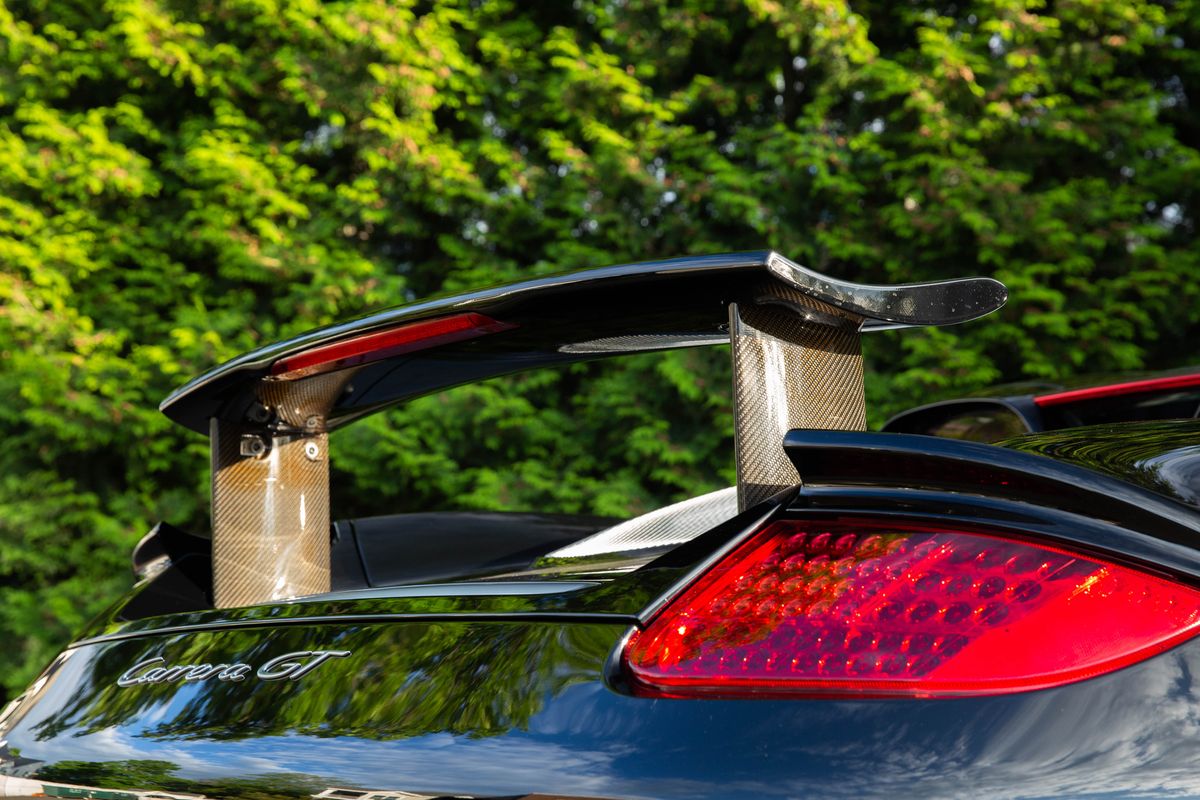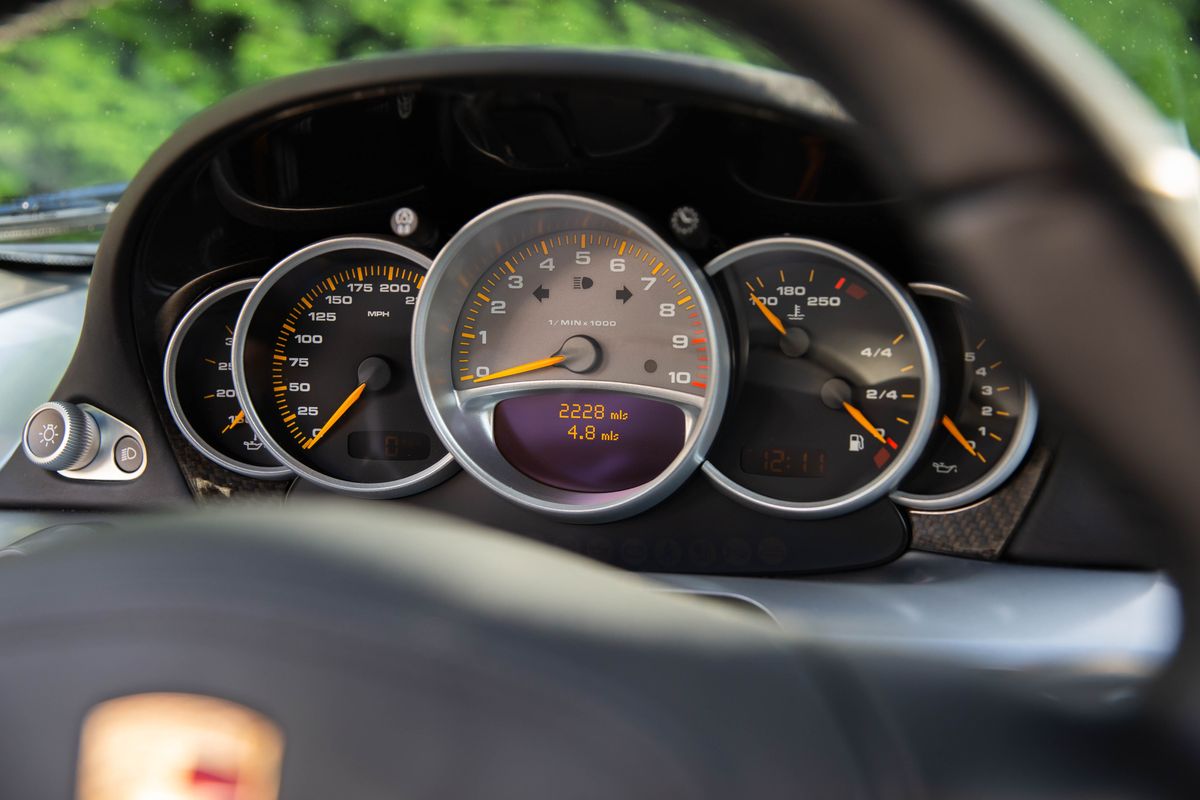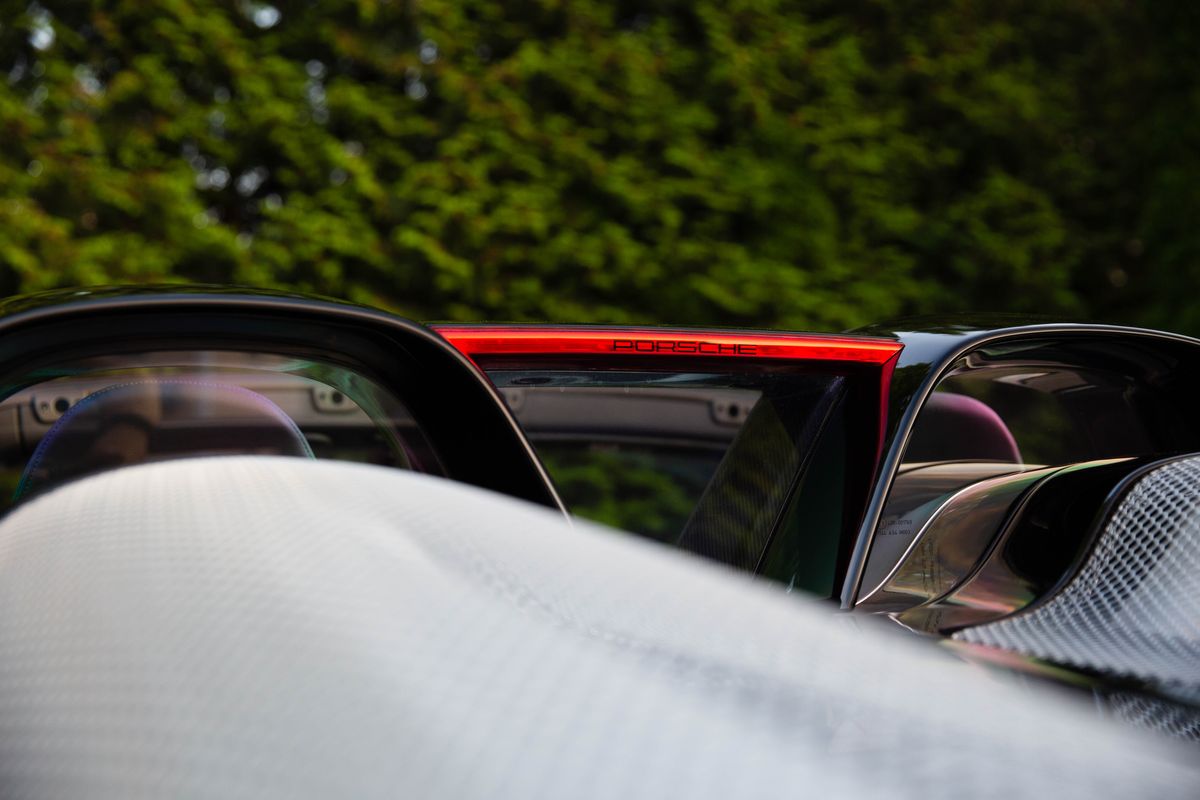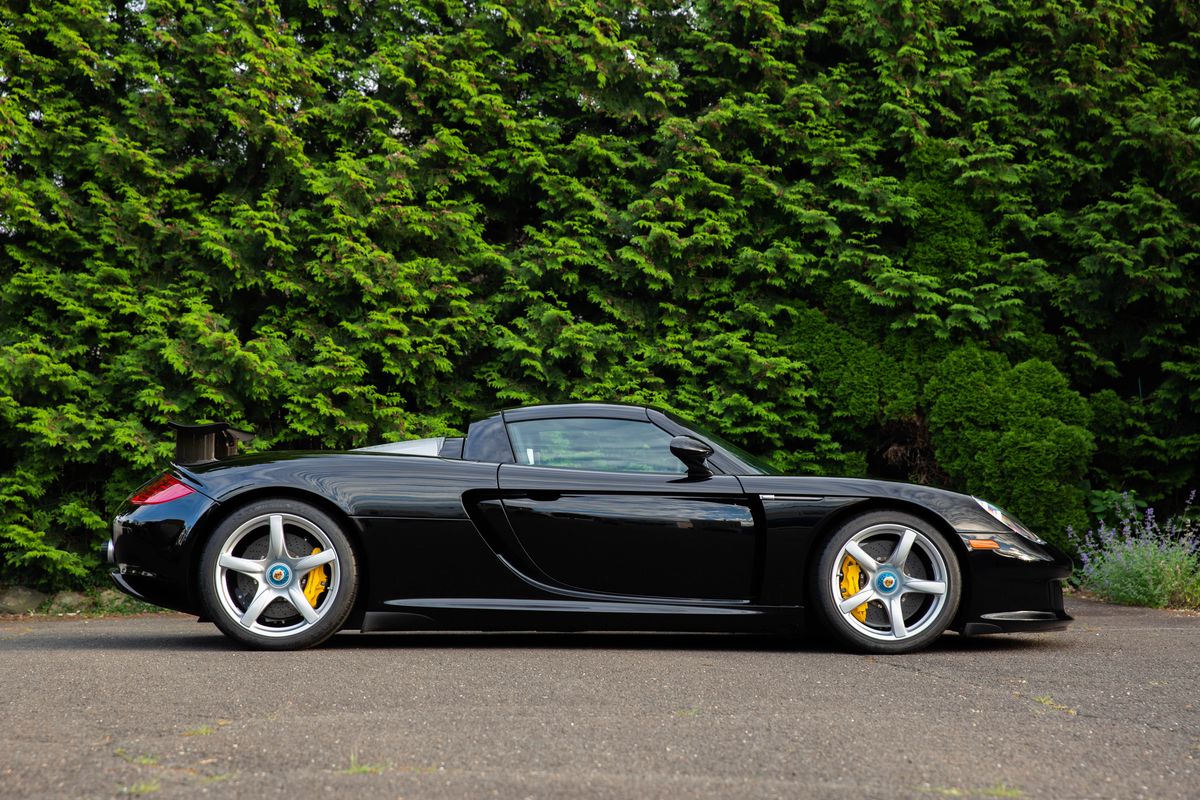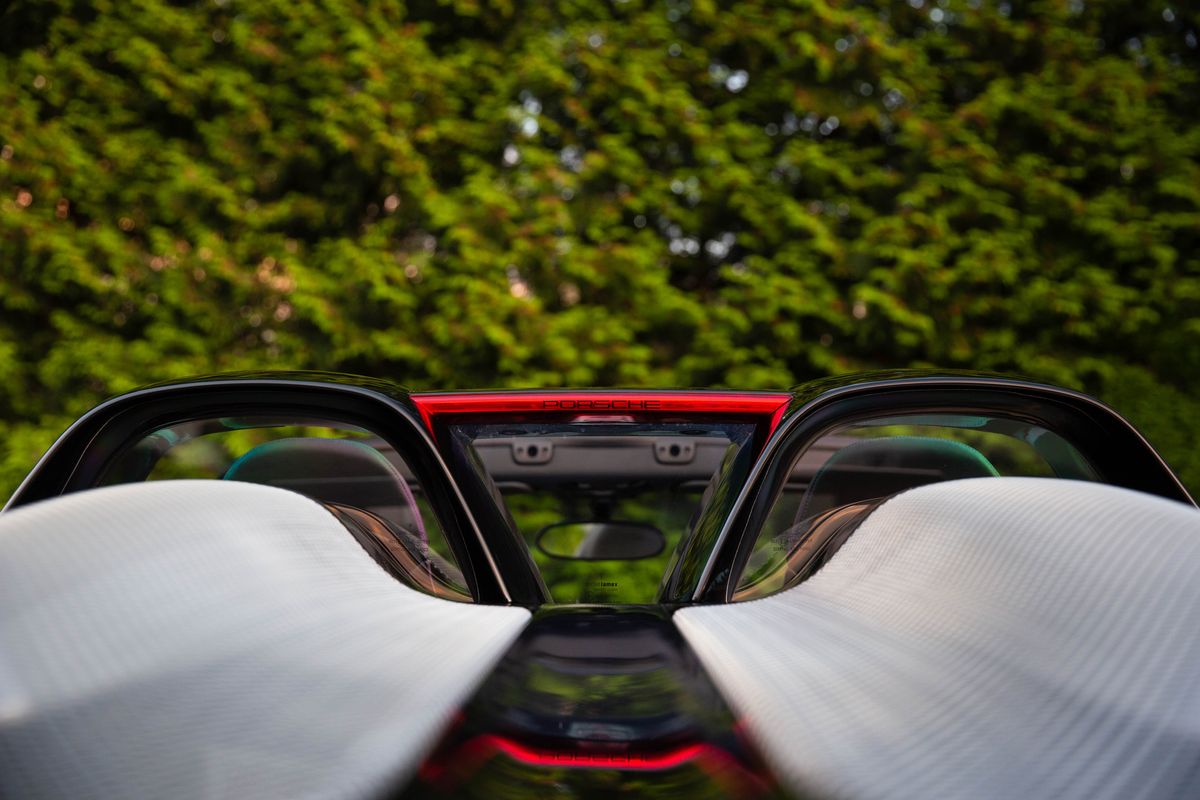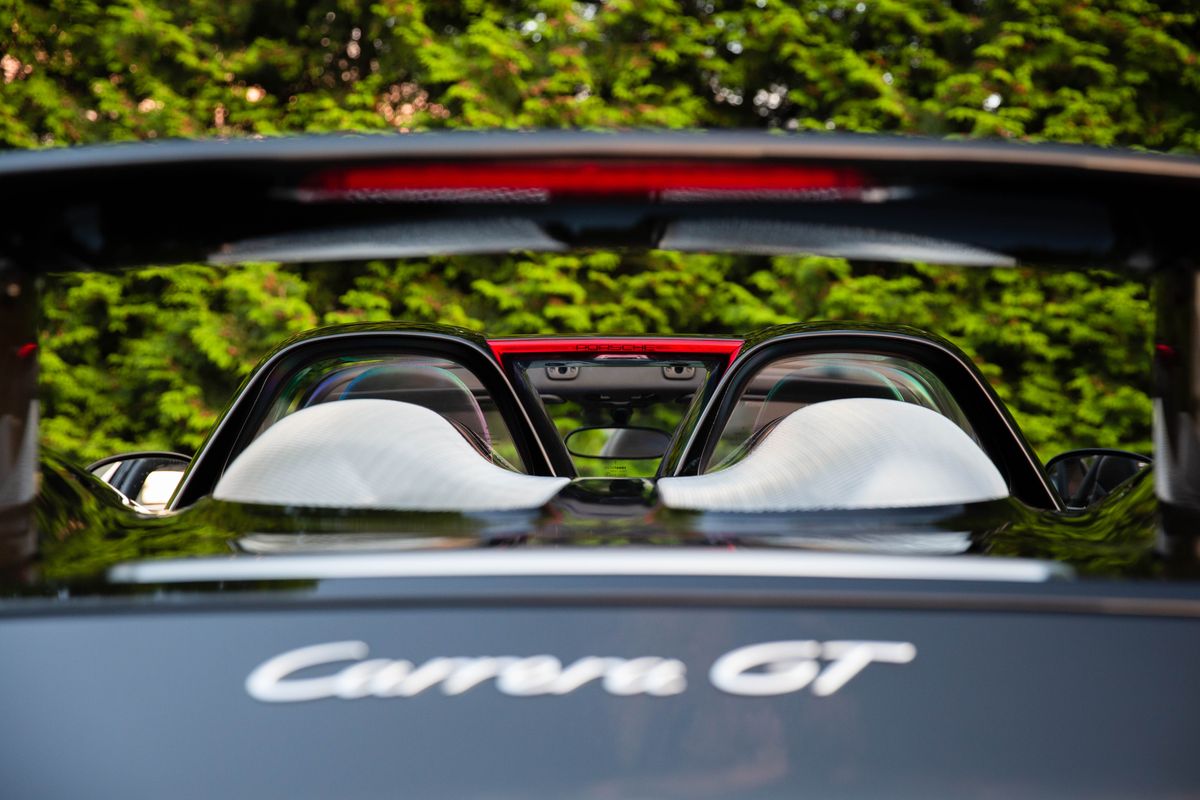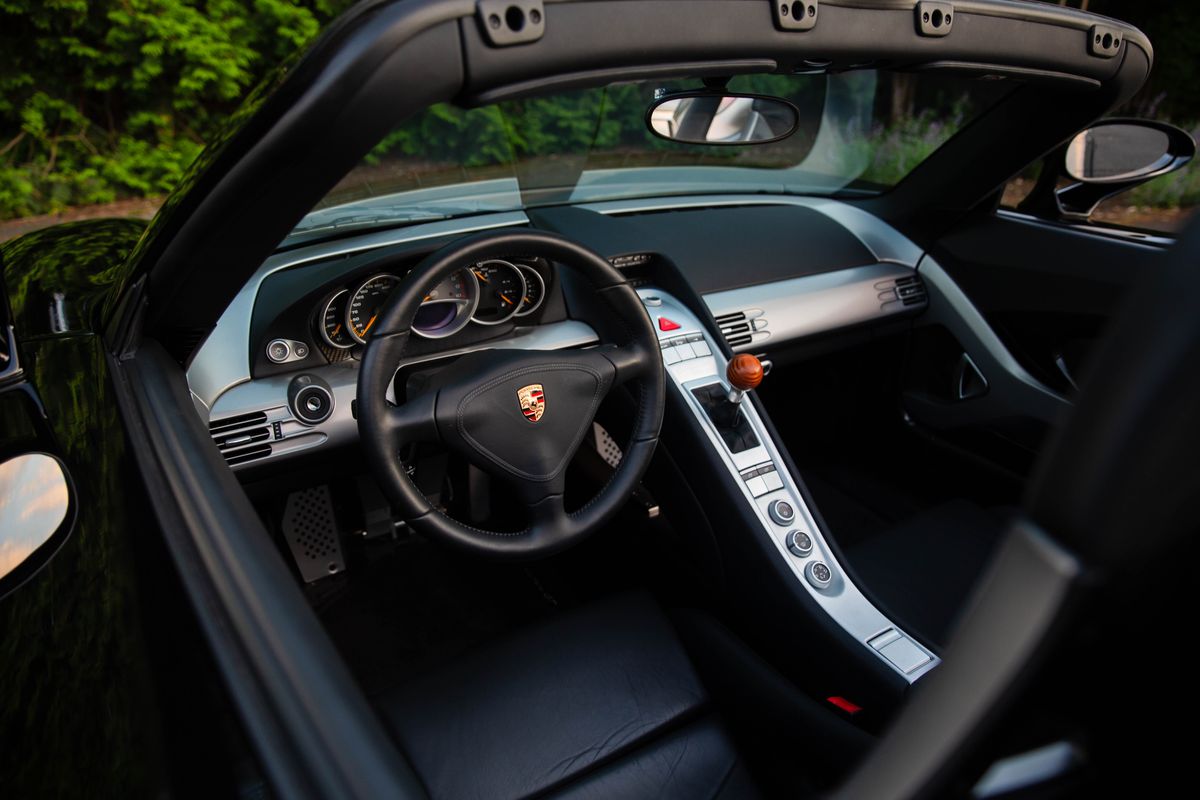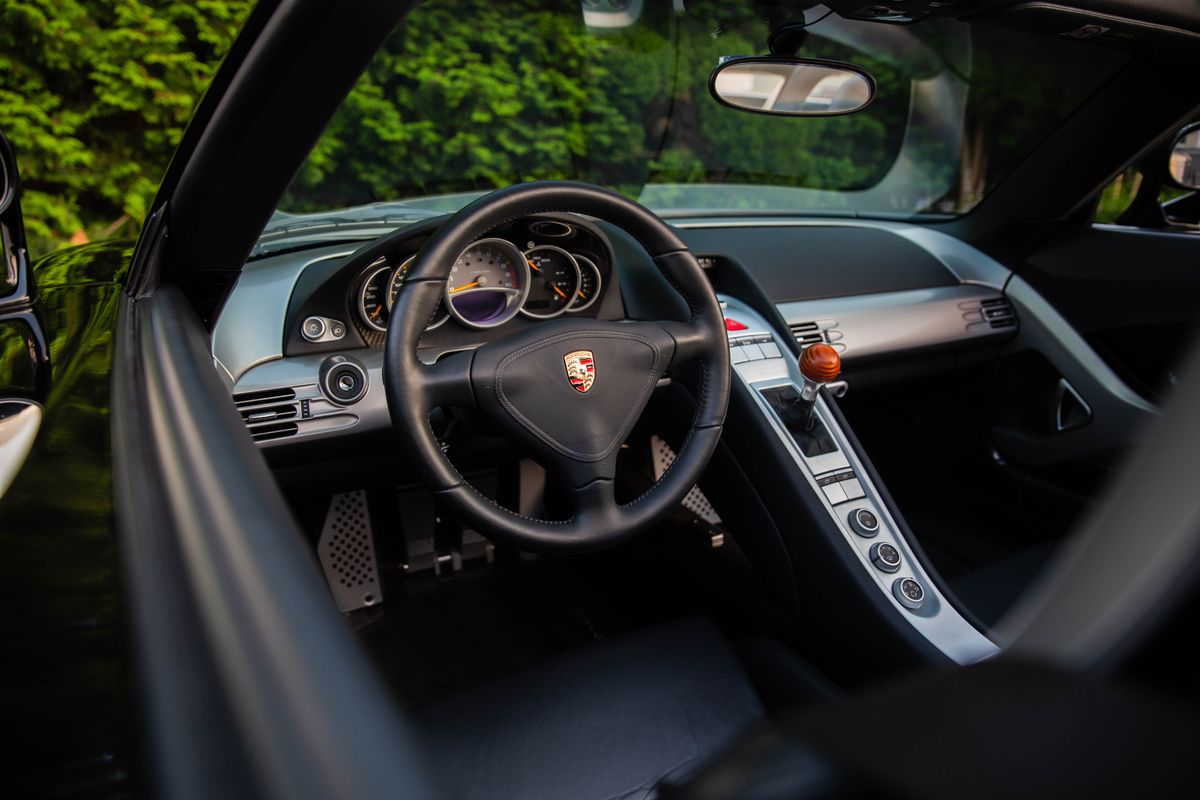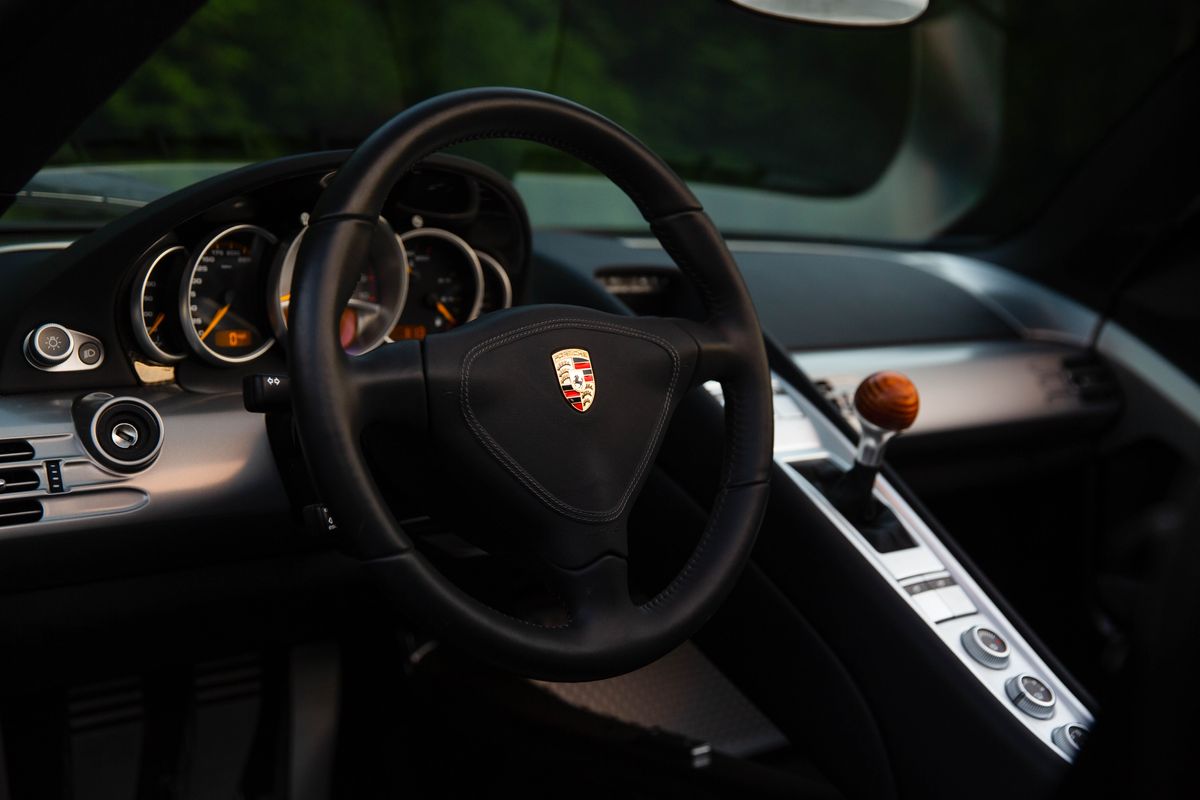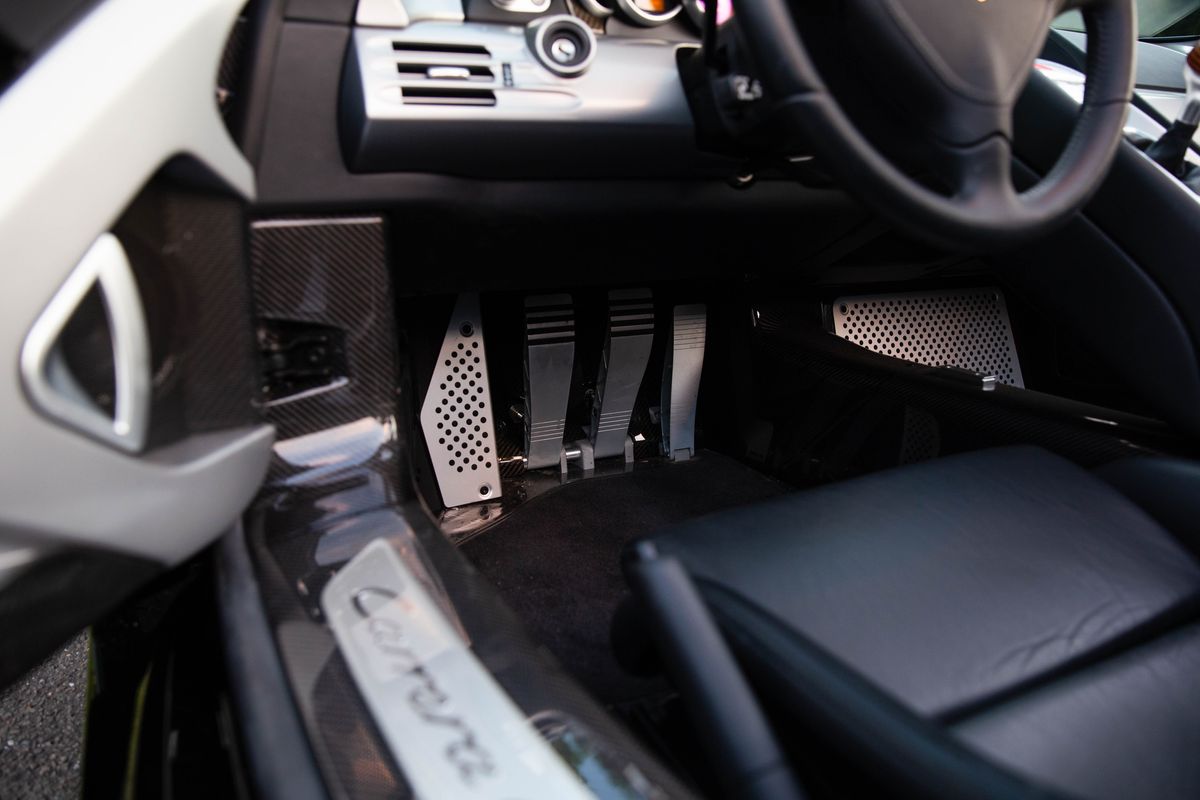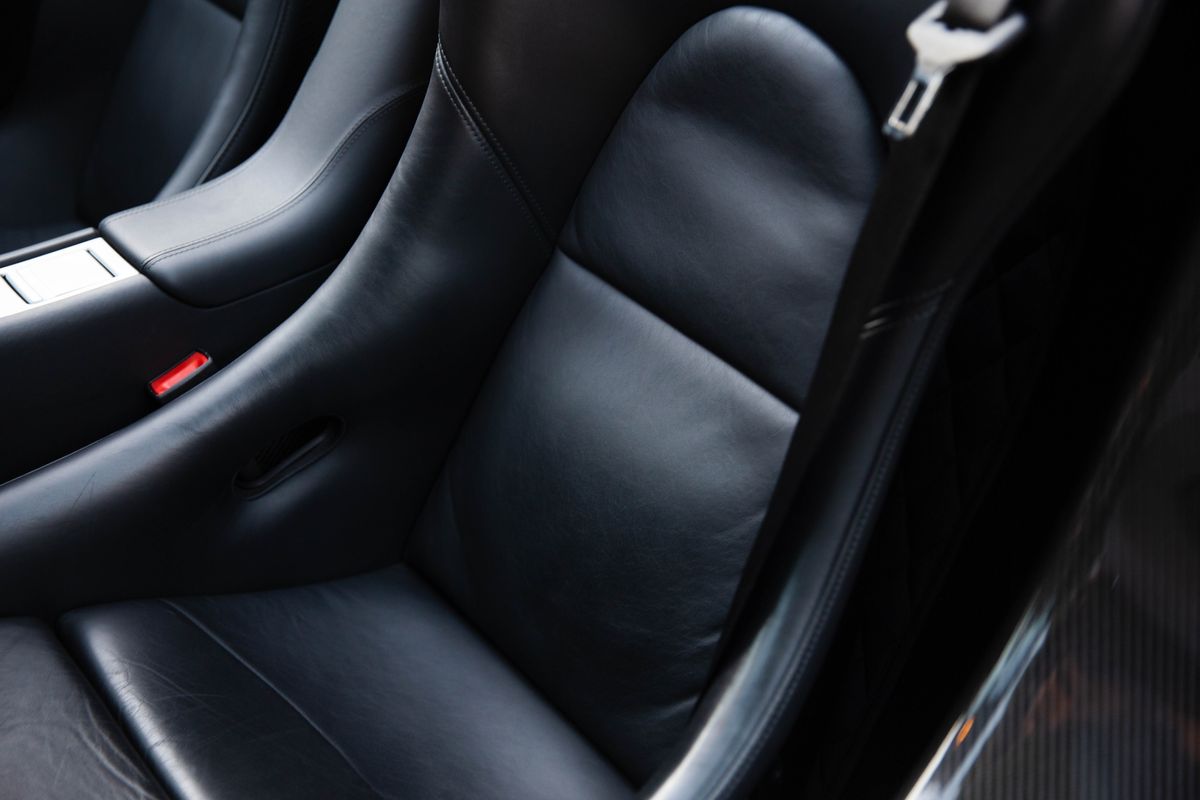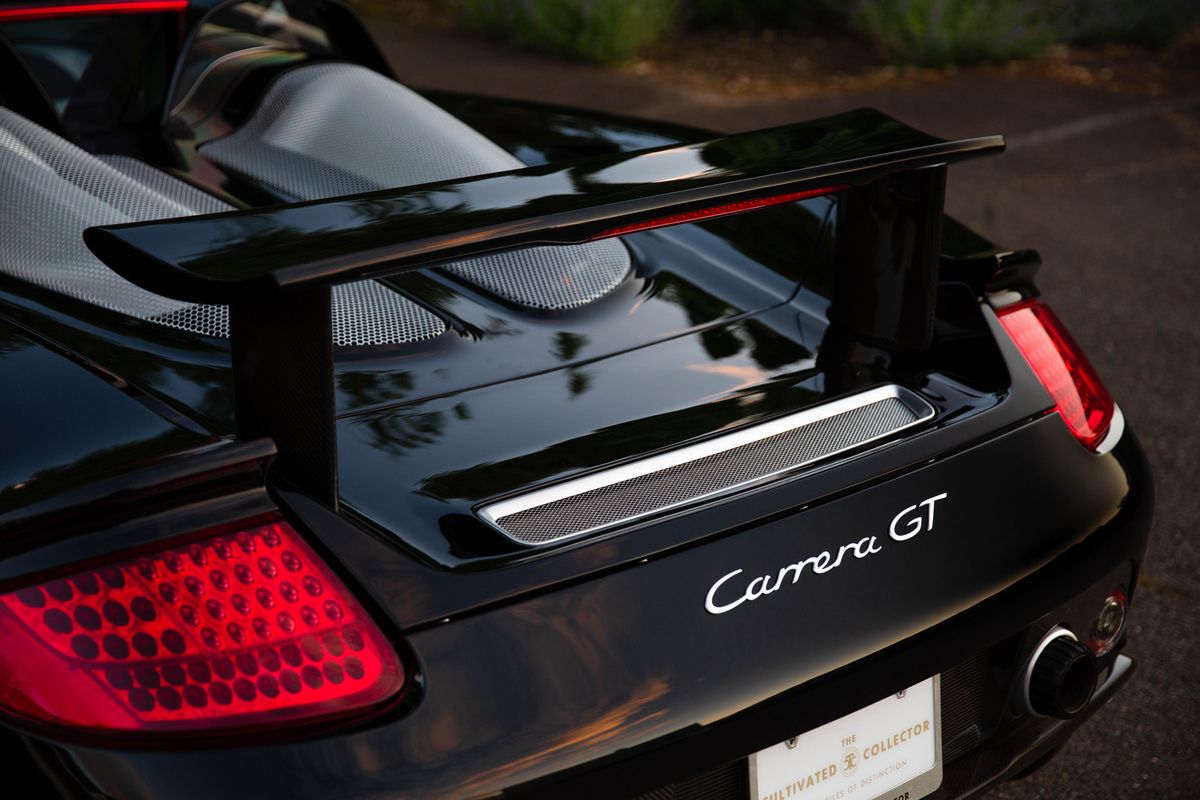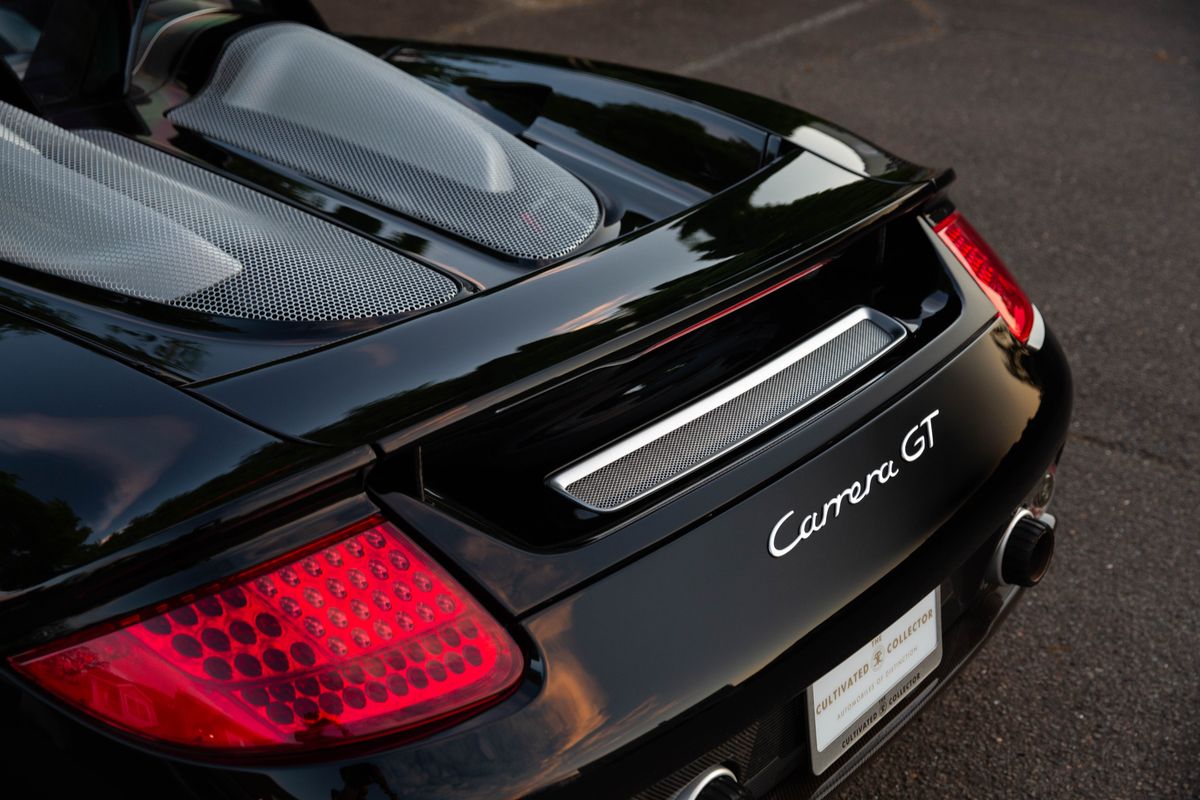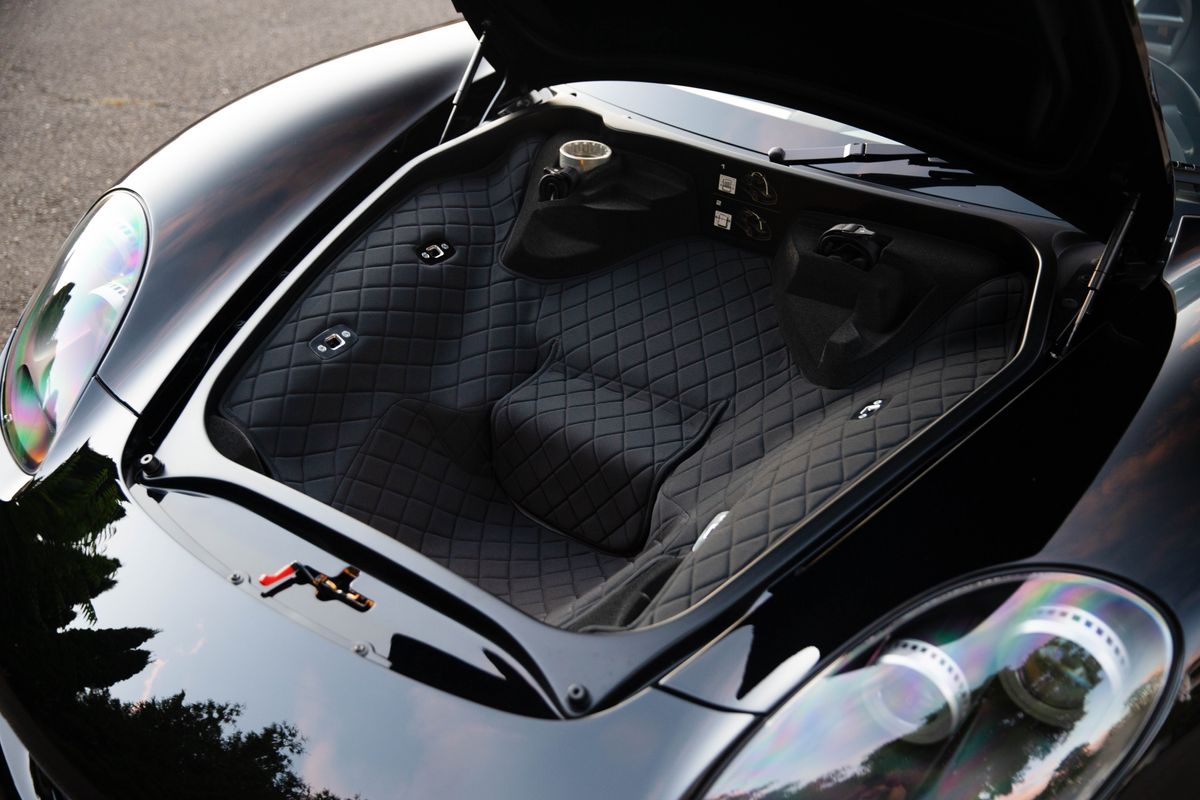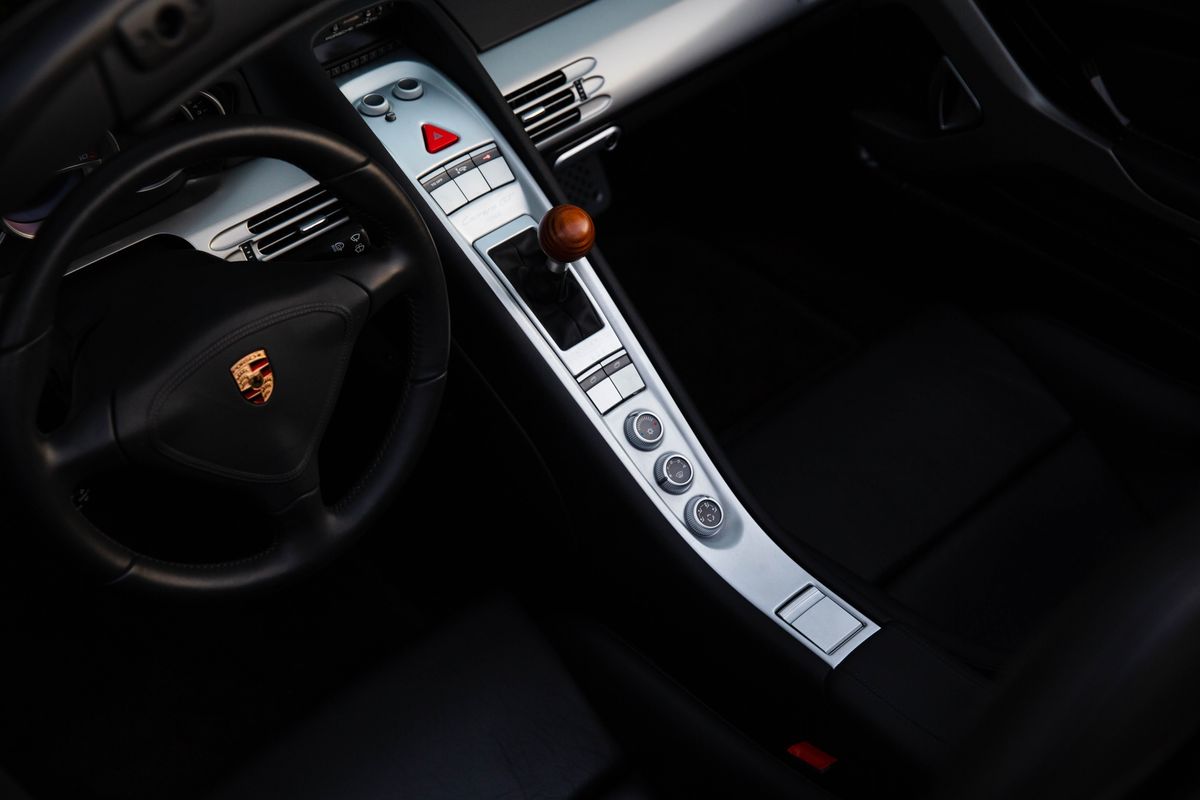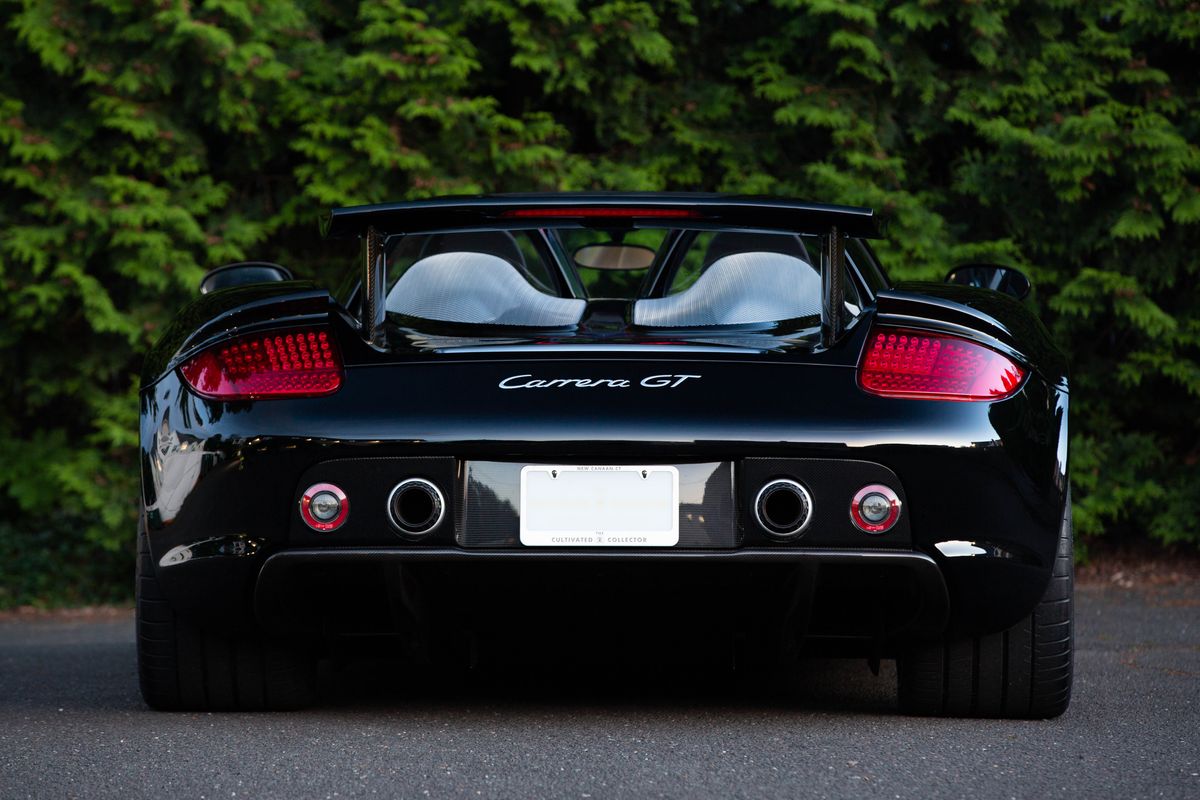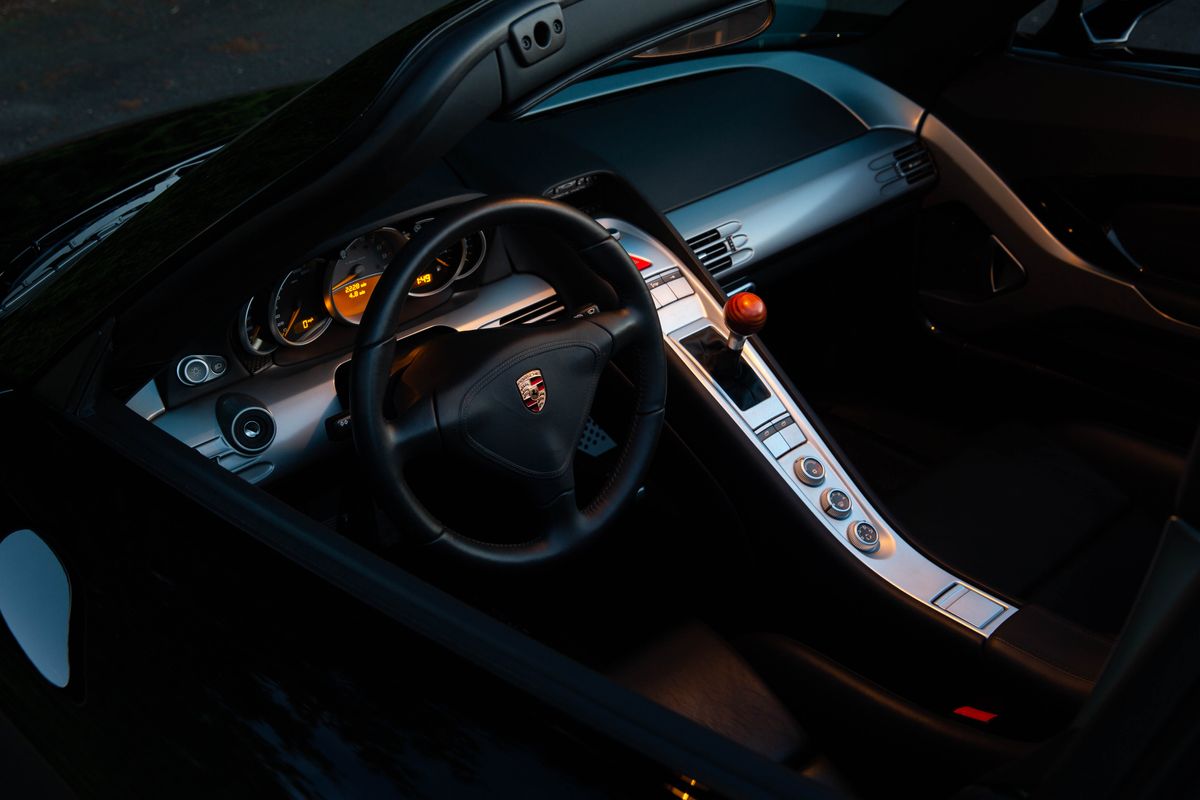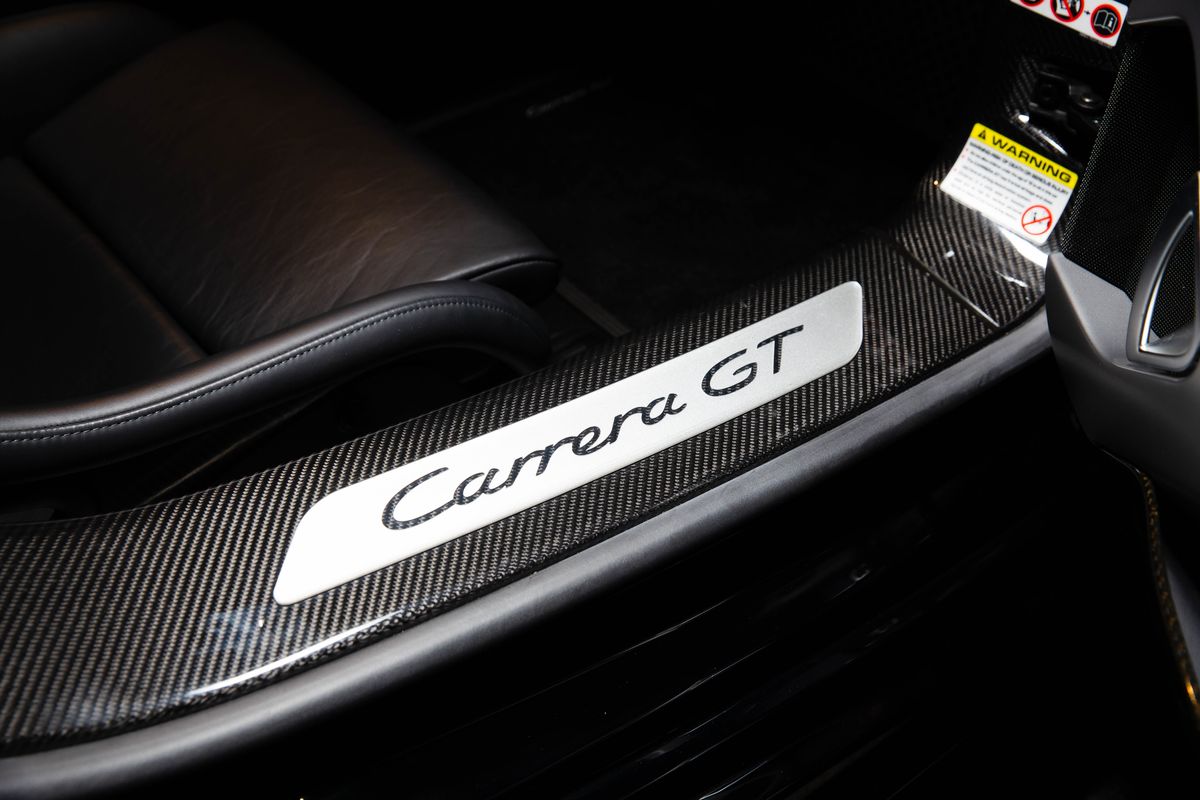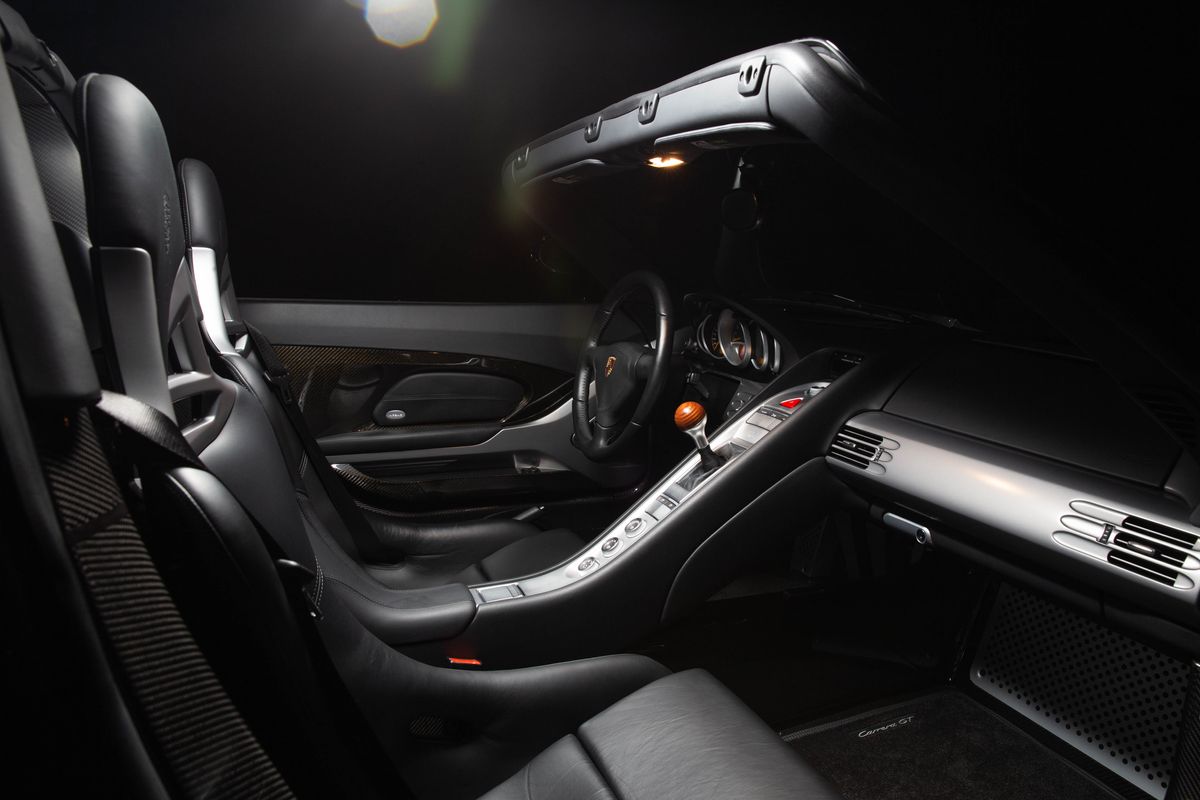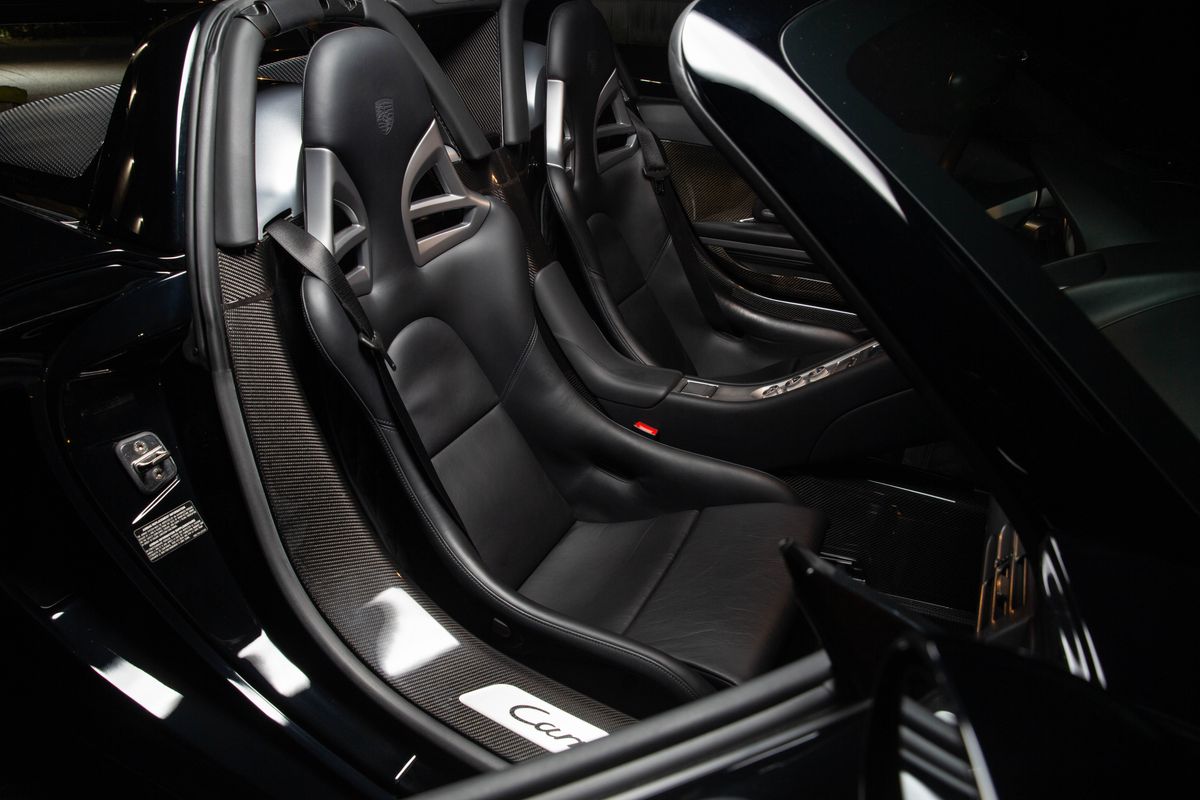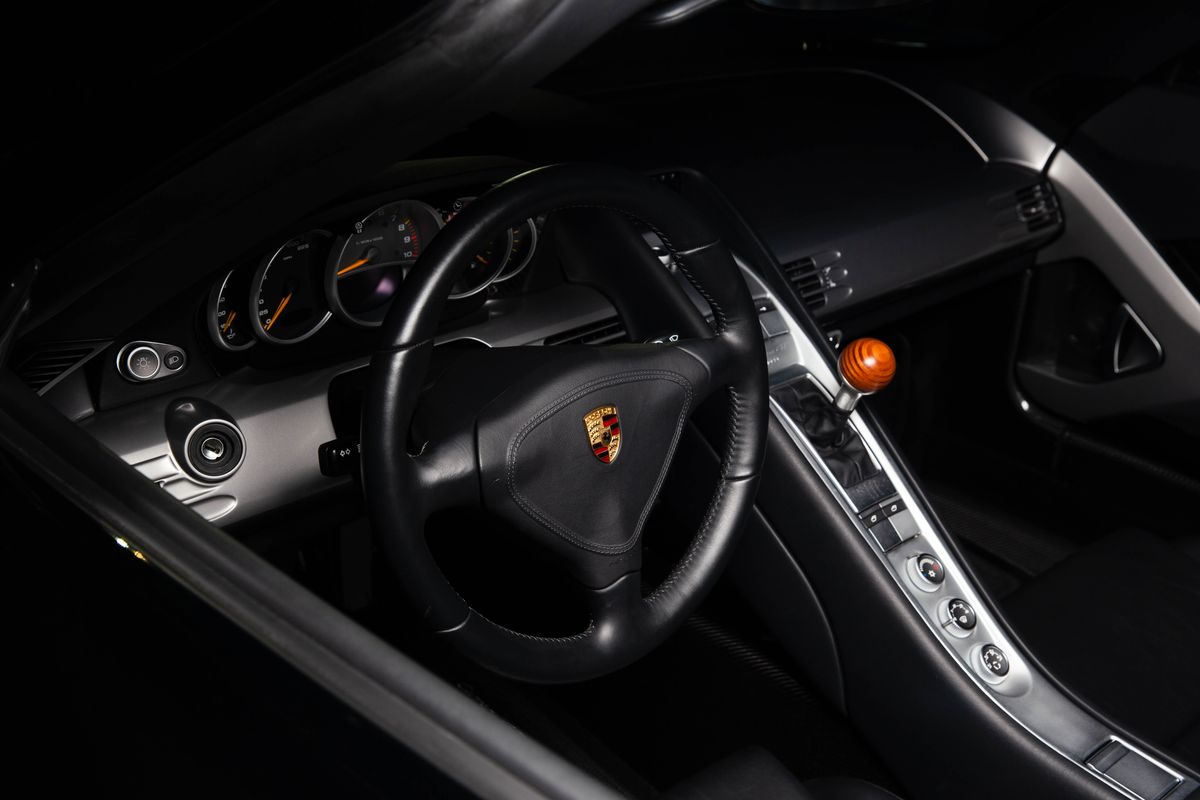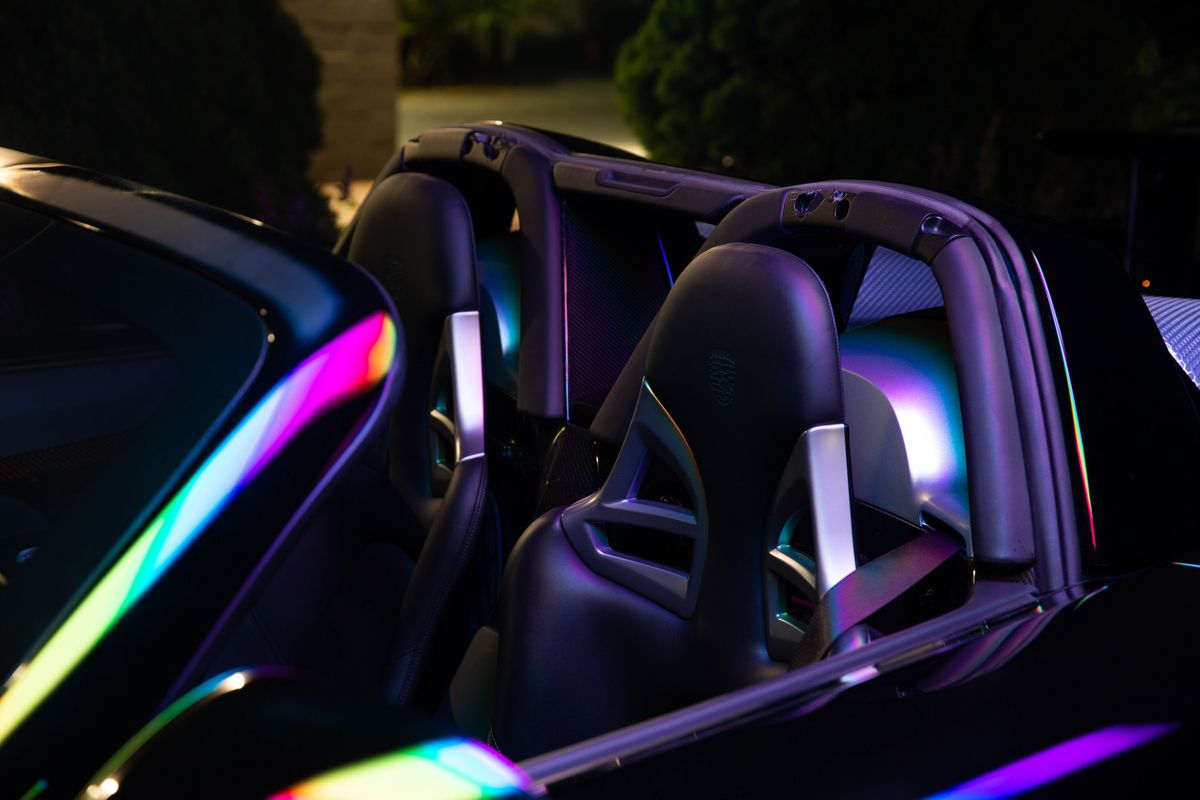2005 Porsche Carrera GT
The deep roots of the Carrera GT can be traced back to the late 1980s, when Porsche was supplying Formula 1 teams with a dominant Techniques d’Avant Garde-badged 1.5L turbocharged V6 engine. With engine regulation changes looming on the horizon, legendary Porsche engineer Hans Mezger would lead the charge for the development of a 3.5L, naturally-aspirated V12 engine. Known as “Type 3512,” this new V12 powered the Footwork Arrows Formula 1 team for the 1991 season. Type 3512 would be Porsche’s swan song in Formula 1, as the 1991 season culminated with Porsche’s departure, and Porsche has yet to return.
Back at Stuttgart, having watched all top-tiers of motorsport transition to naturally-aspirated V10 engines, Porsche decided to reengineer Type 3512 in secrecy over a period of 3 years. At the direction of Horst Hachart, this project would be undertaken by Herbert Ampferer, transforming Type 3512 into a 3.0L V10 unit producing an astonishing 760HP. Porsche treated the redesign as an engineering study exercise to explore their prowess, and prove to themselves that they were still capable of producing an engine fit for the highest levels of motorsport at the time. Upon its completion, however, the reworked Type 3512-based V10 engine was shelved, not seeing the light of day again until 1998.
Porsche’s success in Group C and GT1 was nothing short of legendary, with the 956/962 remaining the most successful sports racing prototype of all time, and the 911 GT1 extending that dominance through the late nineties. The winds of change were approaching by then, with the retiring of “production-based” GT1-class racers giving way to the birth of the dedicated prototypes, leading Porsche to begin secret development of a LMP900-class car to compete in the 2000 season, beginning life under the designation “9R3.” Aptly named the LMP2000, Porsche dusted off the previously shelved Type 3512-based V10 and installed at its core - with displacement increased from a modest 3.0L to a monstrous 5.5L in compliance with the LMP1 engine regulations, as well as a revised valvetrain.
After a few tedious months of development, Project 9R3 produced a single running prototype which would spend two days testing at Porsche’s revered Weissach test track. At the masterful hands of racers Allan McNish and Bob Wollek, the LMP2000 set the overall track record and was received with great praise from the drivers. Despite the success reported in testing, in May of 1999, Porsche’s CEO informed the Project 9R3 team that the LMP2000 was to be canceled, as the team's budget was reallocated to the development and production of the nascent Cayenne SUV. Porsche would squirrel away the LMP2000 into the deepest corner of it’s storage and deny its existence until 2017.
Not all was lost with the cancellation of Project 9R3, however. To generate buzz at the 2000 Paris Auto Show, Porsche decided to develop a road-going supercar concept around the core of Project 9R3, which it dubbed “Carrera GT.” With scintillating good looks and weapons-grade motorsport DNA underneath, the Carrera GT Concept was an immediate sensation, with well heeled Porsche customers demanding its’ production. At this time, Ferrari and Mercedes were in a supercar arms race, with the Enzo Ferrari and McLaren SLR both deep into development. Not one to be outshone by their competitors, Porsche tapped into the dividends of the Cayenne SUV project to fund the creation of the Carrera GT Concept into road-going reality.
Penned by Harm Lagaay, who had already made his mark at Porsche with the 968 and 993, the road going Carrera GT represented the pinnacle of Porsche Motorsports engineering and design of the time. Featuring a carbon fiber monocoque and subframe produced by ATR Composites Group of Italy, the howling, Type 3512-based V10 now bored and stroked to 5.7L making 605HP mounted amidships, mated to a slick-shifting 6-speed manual driving the rear wheels, the Carrera GT was the stuff of motorsports dreams. The interior was executed to perfection, devoid of any gimmicks, simplistic and elegant while being ergonomically efficient, with a beautiful beechwood shift knob serving as a love letter to Porsche’s legendary 917 racer, further cementing the Carrera GT’s Le Mans bloodline.
Met with the highest praise by motoring journalists across the world, the Carrera GT was an instant success and a “last of its kind” supercar, setting the bar stratospherically high for a true analog driving experience. “You'd have to dig to find much else about the Carrera GT that isn't thoroughly wonderful,” Motor Trend would note. Evo Magazine would go on to state, “That V10 is an absolute masterpiece. So free-revving and instantaneous, so responsive to the most minute throttle inputs, you don't so much drive the Carrera GT as play it like an instrument,” concluding their 2005 review with, “More demanding and less forgiving, the Carrera GT is a racer at heart, cohesion building in line with your commitment.” An instant icon, the Carrera GT was immediately one of Porsche’s greatest hits, with worldwide adoration only continuing to increase to this day.
The Cultivated Collector’s 2005 Porsche Carrera GT is an outstanding example of the breed, having been maintained impeccably by a single owner throughout its life. Today Chassis 1029 presents beautifully in its original Black paint over dark gray leather livery. Having covered a mere 2,230 miles since leaving the Leipzig manufacturing facility, 1029 benefits from a major service, performed by marque expert Jimmy Repasi of Repasi Motorwerks in Connecticut. With extensive servicing, single ownership, and low miles, this Carrera GT is ready to send shivers down your spine with the howl of its V10 devouring open road.

